Road tripping along America’s highways is an iconic aspect of US pop culture – from Jack Kerouac’s novel “On the Road” to the road movie “Little Miss Sunshine.”
The trend traces back to the 1950s when these then-new roads became the veins of the United States. Before long, roadside diners and businesses cropped up en route, complete with eye-catching neon signs to lure travelers.
Fast forward 60 years and the businesses may be gone, but many of these distinctive signs remain today – some are revered as unique pieces of art, but many are under constant threat of destruction.
Road-sign enthusiast Debra Jane Seltzer has been photographing America’s vintage signs for more than 15 years.
Now her collection is the focus of Amberley Publishing’s new book “Vintage Signs of America.”
“They are unique and fun – part of an era that needs to be preserved on our streets,” she tells CNN Travel.
GALLERY: See Seltzer’s photos of vintage signs
Car culture
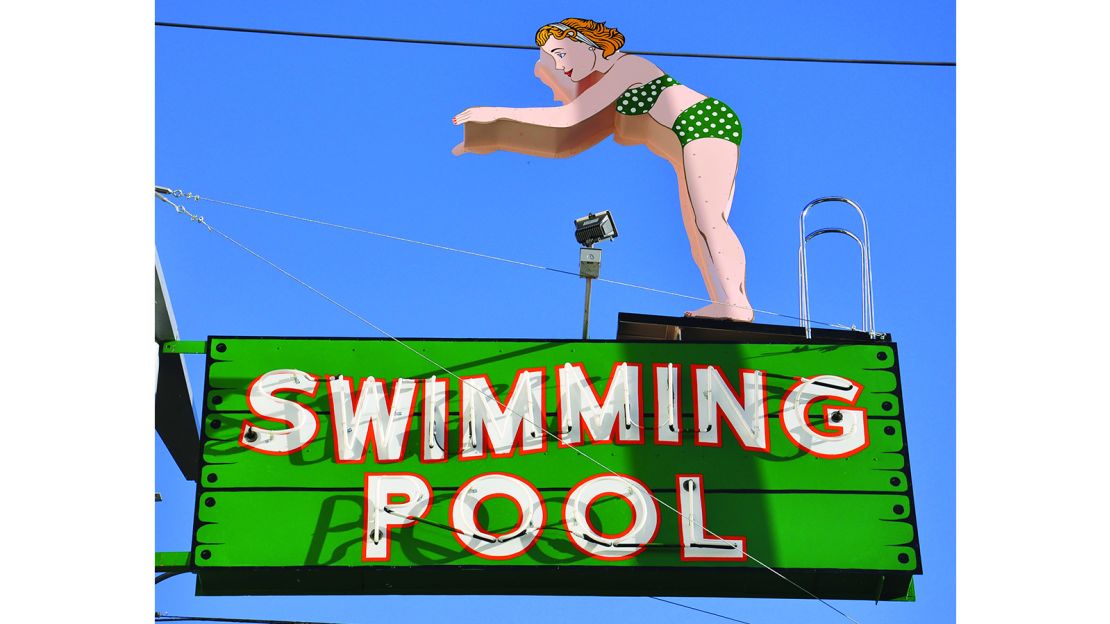
These mid-20th century road signs are a nostalgic slice of old-school Americana, according to Seltzer.
“America was developing like crazy in the ’50s and that’s kind of when neon signs were just everywhere,” she says. “If you had a business you had to have a neon sign, period.”
With their primary colors, flashing lights and moving figures, the signs were designed to attract the growing number of drive-through customers.
“The American highway development and car culture – all of that contributed to the quality of the signs,” says Seltzer.
MORE: Rest stop photos – nostalgic era of the American road trip
Art Deco passion
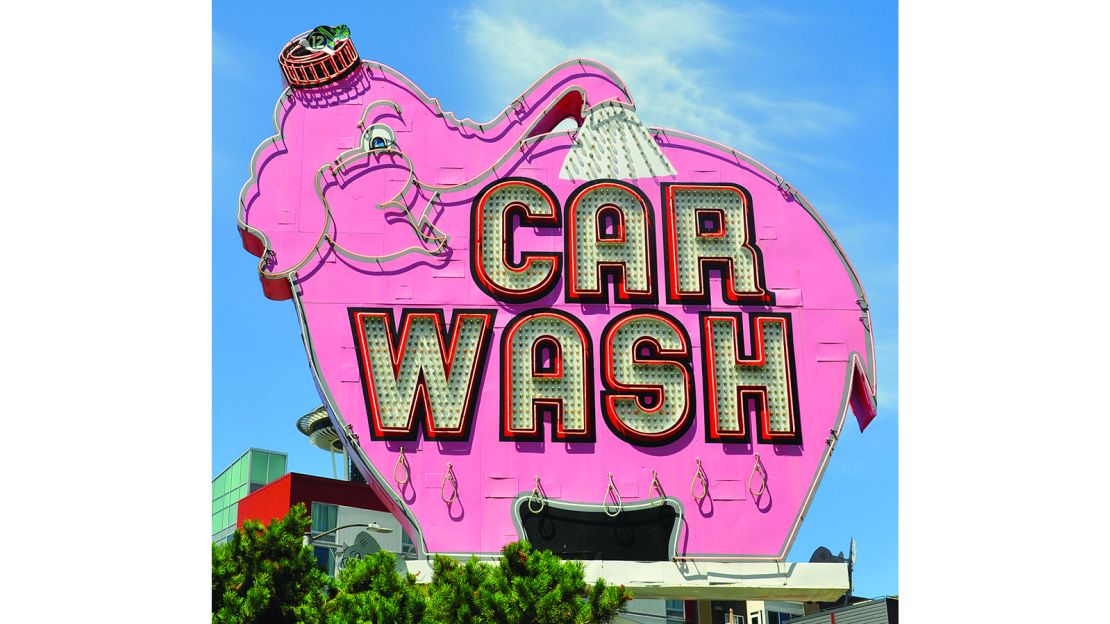
Seltzer dates her own fascination with vintage signs back to when she first learned to drive aged 16.
“My interest in buildings came first,” she says. “As soon as I could drive I was taking pictures of buildings – my first passion was Art Deco.”
Later, in 2000, Seltzer started driving out-of-state to compete in shows with one of her dogs. She took advantage of the time spent on the road to explore the roadside architecture.
Seltzer was struck by the dazzling array of signs she encountered. A keen photographer, she began capturing her favorites and filing them on her website – RoadsideArchitecture.com
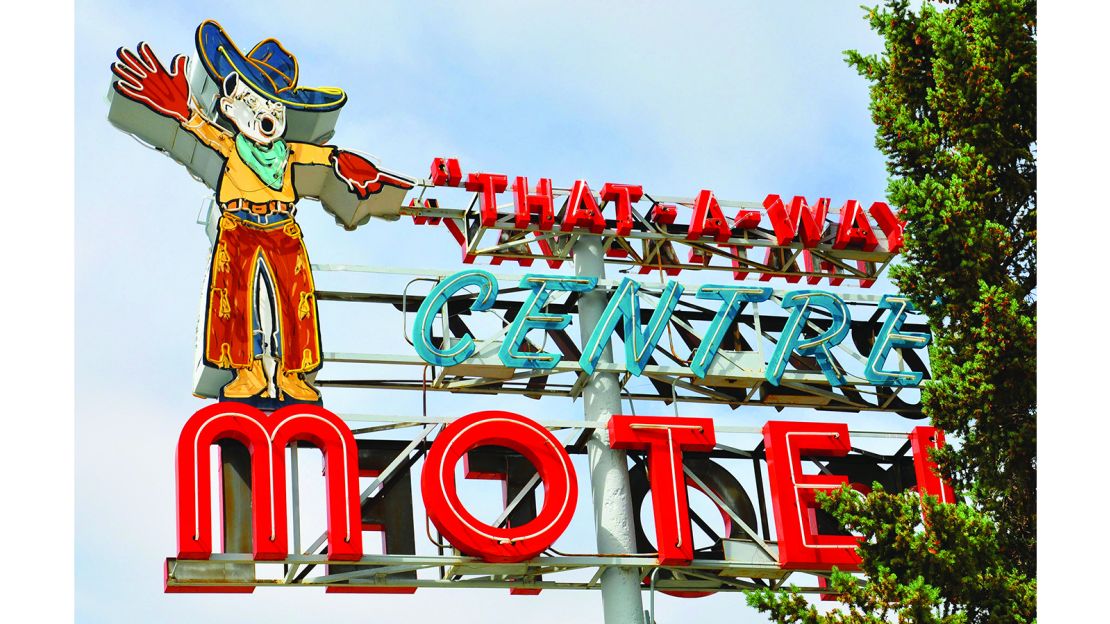
The Internet was in still in its infancy – in this pre-social media age, Seltzer’s online presence was for her – not an audience.
“At that point I don’t think there was Google – or at least I didn’t know about Google or Yahoo search,” she says.
As things developed, she realized the website was getting noticed. Fans started emailing her.
“So I started organizing things better and taking better pictures,” Seltzer says. “It’s a little ridiculous how big it is now – it’s like encyclopedia.”
Categorizing signs by type and era, Seltzer is now on a quest to photograph them all.
“I’m constantly researching, finding out about new things,” she says. “It’s become one of my passions to make sure that we document the history of our signs.”
MORE: The world’s top 10 road trips
On the road
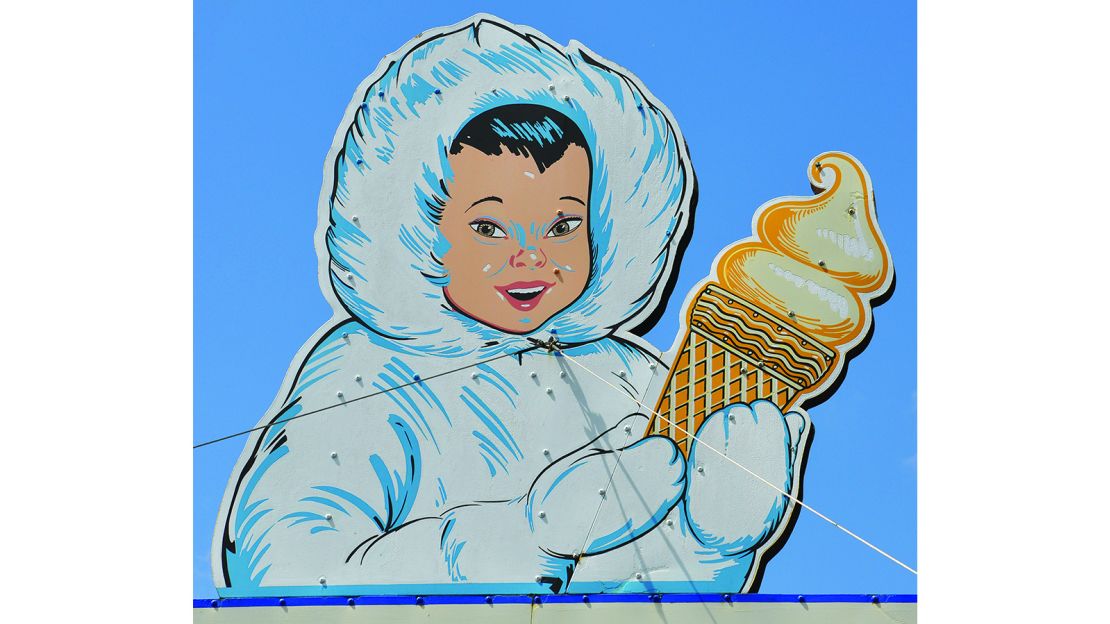
When Seltzer gets behind the wheel, she’s already planned exactly what she wants to photograph that day.
“On average I probably hit about 100 places a day,” she says. “Sometimes more if it’s a dense city, sometimes less if there’s lots of highway and miles between stuff.”
When Seltzer pauses to photograph a sign, she lets the structure’s artistry do the talking.
“I’ll do a full-sized shot and a close up,” she says. “You can see from my photos that I’m like a cropper. I don’t care about context. I just want to have the most detail possible.”
Seltzer eschews filters and photoshopping.
“I don’t do anything like that,” she says. “I want to make the most important thing the sign.”
The photographs go hand-in-hand with the research, which Seltzer takes equally seriously.
“I read everything I possibly can […] sometimes it’s nothing but dead ends,” she says. “I just call everybody and try to leave no stone unturned.”
MORE: Weird and wacky hotels across America
Preserving the past
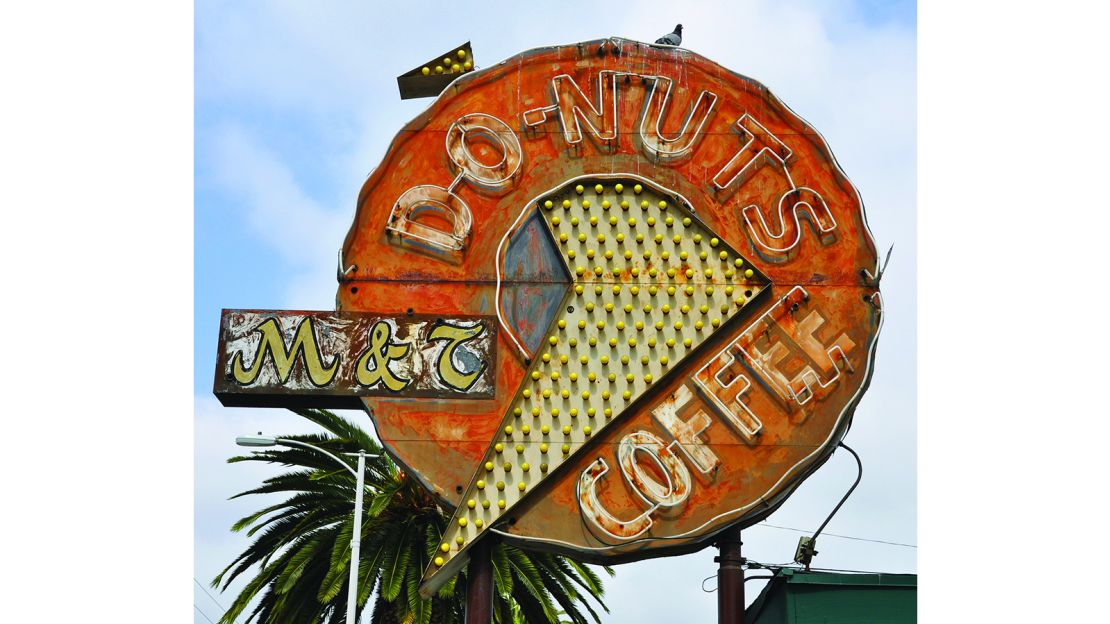
A big part of Seltzer’s work is advocating the protection of original signs, which are dwindling in number.
“They’re all so vulnerable out there to the elements,” she says.
Since the book went to print, one of Seltzer’s favorite signs – at the Corral restaurant in Victoria, Texas – fell victim to Hurricane Harvey.
“It’s now a crumpled wreck,” she sighs. “It’s devastating.”
If it’s not rogue weather that finishes off the sign, it’s the whims of a new owner.
“Any of these beautiful signs that maybe you want to go take pictures of when you’re traveling could disappear at any moment.” says Seltzer.
One way to help, she says, is to make your voice heard. If you admire a sign, let the business owner know.
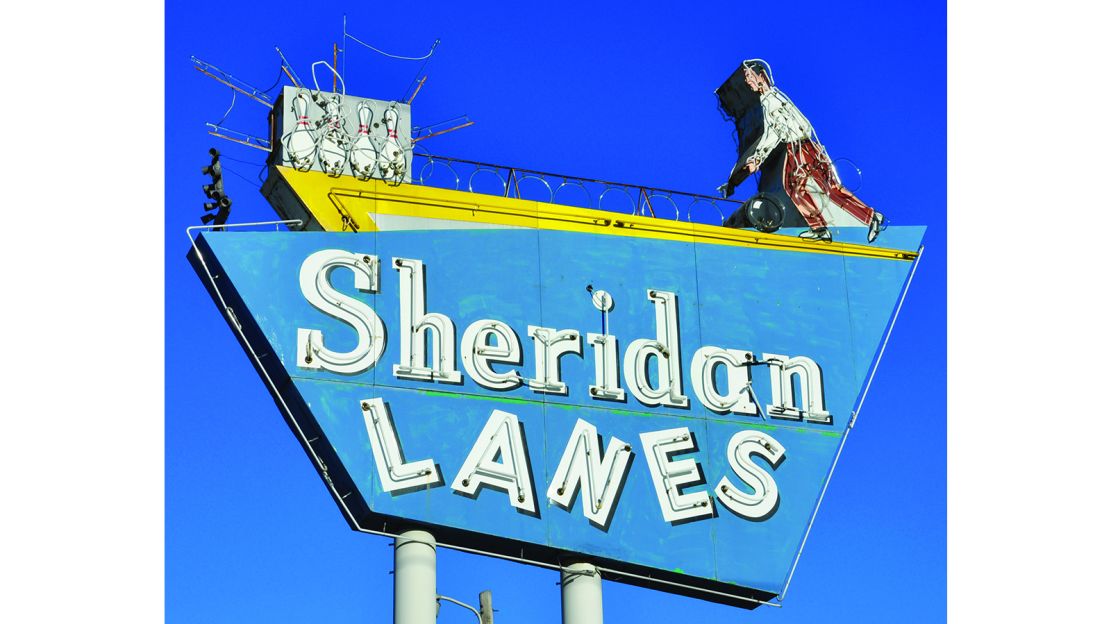
“When they talk about how they are thinking about getting it repainted, you tell them, ‘No - don’t, don’t cheese it up. It’s historic the way it is,’” she says.
There are several examples in Seltzer’s book of signs that have disappeared, only to be reinstated following local outcry. Case in point: the Sheridan Lanes sign in Tulsa, Oklahoma, which dates back to the 1950s.
In 1998, the bowling alley was purchased by the AMF chain and the sign was taken down. But after pressure from the community, the sign was reinstalled.
If a sign can’t stay in its original spot, there are other solutions, says Seltzer.
“Certain cities are having little sign parks built,” she says. “If a sign needs to be moved - where can it go, but still be outside for people to see it as a night tourist attraction?”
MORE: Vintage air travel – photos from golden age of flying
Roadside history
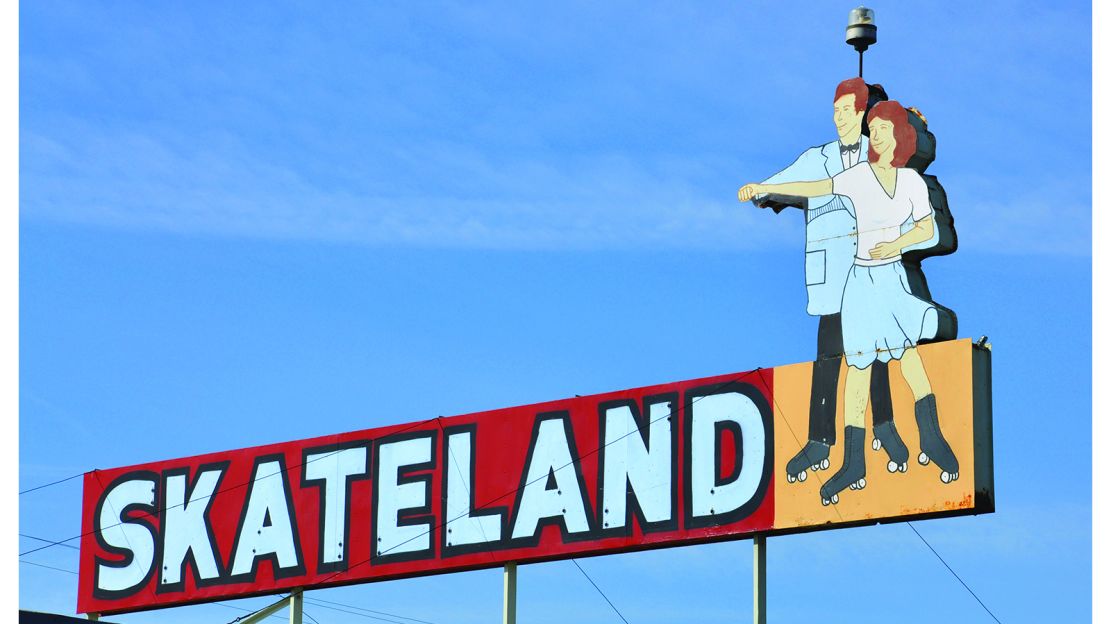
Ultimately, the appeal of these vintage signs lies in their nostalgia.
“It’s a tourist attraction and a part of people’s history when they come back home,” says Seltzer.
The photographer encourages others to follow in her footsteps – alongside her website, she hosts a blog with detailed roadtrip tips – covering everything from the best motels to how to travel with dogs.
Seltzer plans her trips, but she also extols the pleasures of discovering a great sign unexpectedly.
“When you’re trying to document as much as possible before it’s gone, I think you take a different approach,” she says. “But for some people it’s just the joy of bumping into things.”








![<strong>The Pueblo Hotel & Apartments sign, Tucsan, Arizona</strong>: "I don't use [photograph] filters. I don't do anything like that. I want to make the most important thing the sign," says Seltzer. This striking image portrays a sign that was restored by law firm Piccaretta Davis when they bought the former hotel building in 1991.](https://media.cnn.com/api/v1/images/stellar/prod/170907114927-page-51-2.jpg?q=w_1600,h_900,x_0,y_0,c_fill/h_447)

![<strong>Carousel Skate, Sioux Falls, South Dakota: </strong>Seltzer researches the signs carefully. "I read everything I possibly can [...] sometimes it's nothing but dead ends," she says. "I just call everybody and try to leave no stone unturned." Seltzer also photographs the groovy signs of the 1970s -- <strong> </strong>such as this Dakota skate rink.](https://media.cnn.com/api/v1/images/stellar/prod/170907115400-page-83.jpg?q=w_1600,h_900,x_0,y_0,c_fill/h_447)




![<strong>The Sheridan Lanes sign in Tulsa, Oklahoma: </strong>"When [the owners] talk about how they are thinking about getting it repainted, you tell them, 'no - don't, don't cheese it up. It's historic the way it is,'" says Seltzer. Case in point: this Claude Neon-built sign dates back to the 1950s. In 1998, the bowling alley was purchased by the AMF chain and the sign was taken down. After pressure from the community, the sign was reinstalled.](https://media.cnn.com/api/v1/images/stellar/prod/170907115342-page-79.jpg?q=w_1600,h_900,x_0,y_0,c_fill/h_447)




